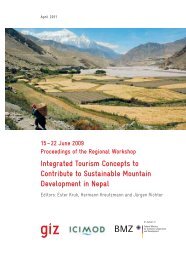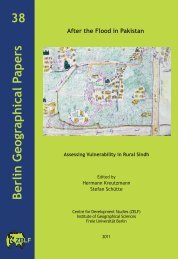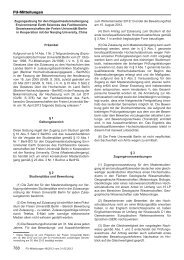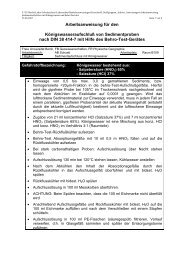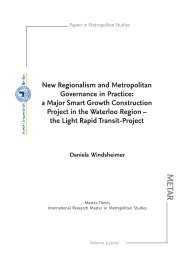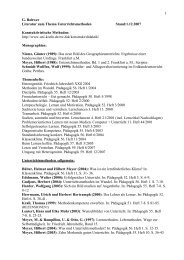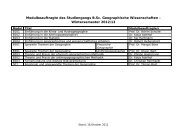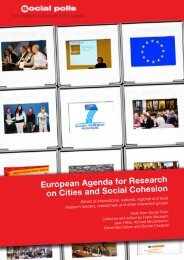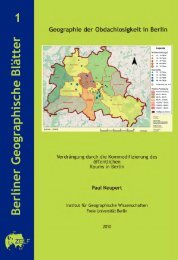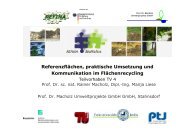Pastoralism and Rangeland Management on the Tibetan Plateau in ...
Pastoralism and Rangeland Management on the Tibetan Plateau in ...
Pastoralism and Rangeland Management on the Tibetan Plateau in ...
Create successful ePaper yourself
Turn your PDF publications into a flip-book with our unique Google optimized e-Paper software.
5000<br />
(m)<br />
4000<br />
3000<br />
208<br />
Detached mounta<strong>in</strong> pastoralism<br />
J F M A M J J A S O N D<br />
Figure 4: Detached mounta<strong>in</strong> pastoralism<br />
Livestock products are exported from <strong>the</strong> high pastures <str<strong>on</strong>g>and</str<strong>on</strong>g> exchanged<br />
<strong>in</strong> market towns <str<strong>on</strong>g>and</str<strong>on</strong>g> cities for all k<strong>in</strong>ds of necessities needed for life <strong>on</strong> <strong>the</strong><br />
<strong>Tibetan</strong> <strong>Plateau</strong>. Clarified butter, meat, wool, felts, hides <str<strong>on</strong>g>and</str<strong>on</strong>g> hair are am<strong>on</strong>g<br />
<strong>the</strong> dom<strong>in</strong>ant products that are exchanged <strong>in</strong> animal husb<str<strong>on</strong>g>and</str<strong>on</strong>g>ry. The previous<br />
market access was replaced by a strictly regulated system of delivery <str<strong>on</strong>g>and</str<strong>on</strong>g> receipt.<br />
Pastoral products were delivered to adm<strong>in</strong>istrative headquarters that fur<strong>the</strong>r<br />
processed <str<strong>on</strong>g>and</str<strong>on</strong>g> distributed <strong>the</strong> goods. In exchange, pastoral communities were<br />
supplied with all items at more highly subsidised rates than were available to<br />
all o<strong>the</strong>r citizens. Collectivisati<strong>on</strong> was regarded as a means to br<strong>in</strong>g <strong>the</strong> same<br />
amenities to <strong>the</strong> mounta<strong>in</strong> dwellers <strong>in</strong> remote locati<strong>on</strong>s as were available to<br />
members of collective farms <str<strong>on</strong>g>and</str<strong>on</strong>g> peoples’ communes <strong>in</strong> o<strong>the</strong>r rural areas. The<br />
comm<str<strong>on</strong>g>and</str<strong>on</strong>g> ec<strong>on</strong>omy regulated all k<strong>in</strong>ds of exchange, tributes <str<strong>on</strong>g>and</str<strong>on</strong>g> subsidies.<br />
Permanent settlements restricted <strong>the</strong> flexibility of movement <str<strong>on</strong>g>and</str<strong>on</strong>g> <strong>the</strong> potential<br />
for adaptati<strong>on</strong>, while at <strong>the</strong> same time <strong>in</strong>frastructure assets were brought to<br />
focal habitati<strong>on</strong>s that functi<strong>on</strong>ed as central places <strong>in</strong> remote locati<strong>on</strong>s.<br />
In recent years two new forms of organis<strong>in</strong>g pastoralists have been tested<br />
<str<strong>on</strong>g>and</str<strong>on</strong>g> implemented that can be regarded as a fur<strong>the</strong>r step <strong>in</strong> “develop<strong>in</strong>g” <str<strong>on</strong>g>and</str<strong>on</strong>g><br />
“modernis<strong>in</strong>g” peripheral communities. Under <strong>the</strong> head<strong>in</strong>g of “resettlement”<br />
two approaches are followed: (i) Resettlement <strong>in</strong> high pastures (Figure 5). In<br />
fur<strong>the</strong>r<strong>in</strong>g <strong>the</strong> modernisati<strong>on</strong> attempts of previous <strong>in</strong>terventi<strong>on</strong>s <strong>in</strong> pastoral<br />
communities, schemes have been designed that br<strong>in</strong>g features of urbanisati<strong>on</strong><br />
to pastures <str<strong>on</strong>g>and</str<strong>on</strong>g> <strong>the</strong>ir <strong>in</strong>habitants.



